Podcast – Week 8 – First recording experience
I am finally moving on to the hands on portion of this journey, and I can’t be more excited! There were a lot of things that I thought I had figured out, but soon realized I had a lot more to learn…. So, lets get into it!
So, last week I talked about distribution platforms. That was a great learning experience. This week I set off to learn about recording platforms. Any of the “podcast” episodes I did for grad class assignments, I used Canva. However, I wanted to branch out from this platform and look at others that may provide better tools. As I started the research, two platforms came up consistently: Audacity and Riverside.fm. As I read up on both platforms, it seemed that a lot of podcasters indicated that while Audacity is a great editor, it isn’t fantastic for recording. Riverside.fm stores all recordings locally, so you do not lose quality when transferring or using a lower grade internet. Ok, so I will give Riverside a shot and explore how to edit with Audacity (and find out if it is worth the hassle for a beginner like me)*.
*Edit: I have since found out that Riverside has updated their platform to include a comprehensive editing option. There is no need to use Audacity for editing. I will stick with Riverside.
When I signed up for Riverside, it was quick and easy. Once I got into the recording and editing portion of the program, I noticed that it was reminiscent of Canva. While it wasn’t a carbon copy (due to the different capabilities), I found it was easier to navigate because it echoed Canva’s organization and layout.
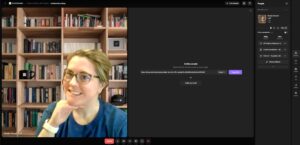
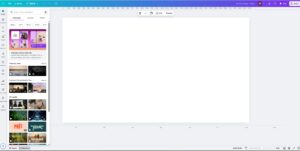
After I quickly tested out the recording function, I moved on to testing out the editing capabilities.
Now, you will notice that the camera is off in the screen grab of the editing window below. Apparently my 15 year old webcam is not up to the specifications of this platform. Who knew old equipment wouldn’t have the same quality as today (she said sarcastically)?! So, if I were to do video podcasts, I would either need to use my phone (iPhone 15… don’t worry I am not always behind the times) or purchase a new camera capable of the quality I need.
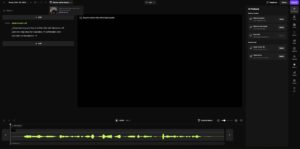
As I started to work with the platform, I noticed that even some of the recording and editing options echoed the layout in Canva. It has a similar screen when you record, and the editing tools are quite similar. Below is the audio I recorded on both of these platforms. These audio bars are where you do all the editing of your recorded audio.
Riverside : Canva:
![]()

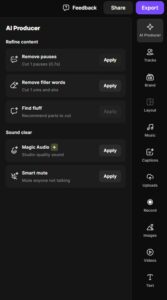
Now, the editing capabilities of Riverside are quite impressive. First, after you are done recording, Riverside’s AI creates an editable transcript of what you said (right down to the umms and ahhs). The AI can eliminate dead air and the “ums” and “ahs” with the selection of this option. Then, you can edit out the filler words, eliminate words or sections that you recorded without having to rerecord or splice the audio/video. This allows for a less painful editing process.


When I worked with the editor, I could see how this would save hours of editing. You wouldn’t need to reshoot something if you were unhappy with a section. I found that I spend an immense amount of time rerecording in Canva because I made a mistake when speaking. If I had this editor, all I would have to do is restart and edit out that part by deleting that portion in the transcript.
Now, I will admit, I had a few issues when I started editing the short clip I recorded. I attempted to add in music. I thought that this would be a good skill to have. I don’t have any music in my early podcasts, and I found that was one of the things I would change if I were to ever release these episodes. However, after adding the music to the recording I made, I couldn’t trim or fade the music to save my life. It just kept playing the whole clip at the same volume. I am quite technologically suave. It should not have been that difficult. I started to question everything I new about my life and computers until I refreshed the page to see if that would help. Of course that is all I needed to do to get it to work. The IT Crowd’s advice should always be the first step….. Anyways…
The editor boasts that it will also create a transcript for any document you upload. This is a fantastic feature because I can now edit with this program and not returning to the original platform for editing and rerecording and then having to re-upload the episode to Riverside. I decided to upload one of my podcasts to Riverside to test out this capability. I was blown away with the results. Not only did it create the transcript, but it recognized the individual chapters within the podcast and labelled them. So, I can now edit this podcast (that was created with another platform) with Riverside’s tools.
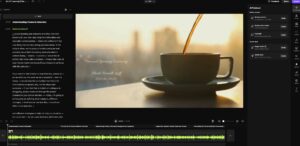
The precursory recording attempt with Riverside was extremely positive. I am quite happy with its capabilities (even using the free version) and how easy it is to use. I am looking forward to recording with this platform.
Wow, it sounds like RIveside has really stepped it up and is the full package! Your experience with Canva would have helped a lot, not only where the two platforms are similar, but also recognizing how great the additional capabilities are.
I am looking forward to listening! Do you have an idea where the podcasts can be hosted?